-
 Bitcoin
Bitcoin $82,014.1421
-1.19% -
 Ethereum
Ethereum $1,803.7058
-1.41% -
 Tether USDt
Tether USDt $1.0001
0.03% -
 XRP
XRP $2.0593
-4.88% -
 BNB
BNB $593.0661
-2.05% -
 Solana
Solana $123.6461
-1.13% -
 USDC
USDC $1.0001
0.00% -
 Dogecoin
Dogecoin $0.1628
-4.07% -
 Cardano
Cardano $0.6393
-5.58% -
 TRON
TRON $0.2331
1.13% -
 Toncoin
Toncoin $3.9040
2.39% -
 Chainlink
Chainlink $13.1480
-4.09% -
 UNUS SED LEO
UNUS SED LEO $9.1039
-5.83% -
 Stellar
Stellar $0.2629
-2.34% -
 Avalanche
Avalanche $18.5339
-3.93% -
 Shiba Inu
Shiba Inu $0.0...01210
-4.08% -
 Sui
Sui $2.2086
-7.00% -
 Hedera
Hedera $0.1579
-7.91% -
 Polkadot
Polkadot $4.0066
-2.36% -
 Litecoin
Litecoin $81.8554
-4.81% -
 MANTRA
MANTRA $6.2317
-2.46% -
 Bitcoin Cash
Bitcoin Cash $297.1179
-3.10% -
 Dai
Dai $1.0000
0.01% -
 Bitget Token
Bitget Token $4.4309
-4.80% -
 Ethena USDe
Ethena USDe $0.9999
0.00% -
 Pi
Pi $0.6964
-9.25% -
 Hyperliquid
Hyperliquid $12.7116
1.48% -
 Monero
Monero $215.2306
-0.46% -
 Uniswap
Uniswap $5.8415
-2.23% -
 Aptos
Aptos $5.1747
-2.52%
How to solve the noise problem of mining equipment in FIL mining?
Filecoin mining's noise pollution can be mitigated by soundproofing enclosures, dampening materials, relocating to quieter areas, using quieter hardware, and optimizing mining operations for reduced fan speeds.
Mar 24, 2025 at 10:57 pm
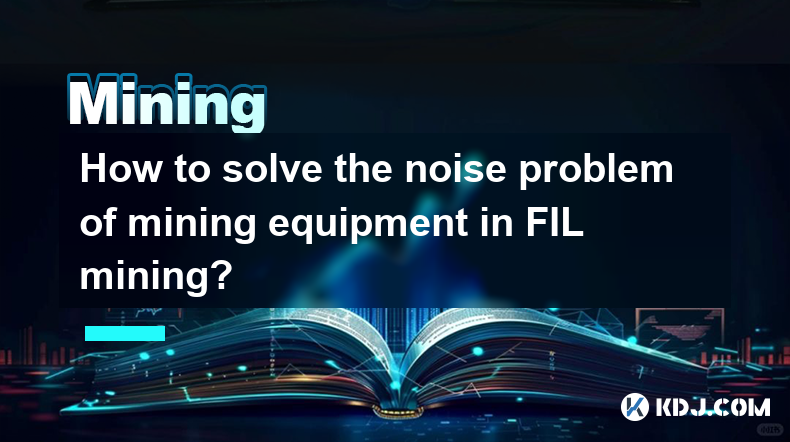
Key Points:
- Understanding the sources of noise in Filecoin (FIL) mining.
- Implementing soundproofing solutions for individual mining rigs.
- Utilizing sound dampening materials and techniques.
- Exploring alternative mining locations to mitigate noise pollution.
- Considering quieter hardware and optimizing mining operations.
How to Solve the Noise Problem of Mining Equipment in FIL Mining?
Filecoin (FIL) mining, while potentially lucrative, often presents a significant challenge: the considerable noise generated by the mining rigs. This noise stems primarily from the powerful fans needed to cool the high-powered hardware constantly working to verify and store data on the Filecoin network. The whirring and humming can be disruptive, even unbearable, for those living or working nearby. This article explores various methods to effectively mitigate this noise pollution.
The first step in addressing the noise issue is pinpointing its source. Is the noise primarily from the hard drives, the cooling fans, or the power supply unit? Identifying the loudest components allows for targeted solutions. For example, a noisy hard drive might benefit from replacing it with a quieter Solid State Drive (SSD), though this could impact storage capacity.
Next, consider soundproofing your mining setup. This involves creating a barrier between the noise source and its surroundings. Several effective methods exist.
- Enclose your mining rigs in a soundproof enclosure. These pre-made or custom-built boxes use sound-absorbing materials to significantly reduce noise levels. Make sure the enclosure has adequate ventilation to prevent overheating.
- Use sound-dampening materials. These include acoustic foam panels, bass traps, and sound blankets. Strategically placing these materials around the mining rigs can absorb and diffuse sound waves.
- Isolate the mining rigs from the surrounding structure. Using vibration dampeners under the rigs can reduce noise transmission through floors and walls. This is particularly helpful if your mining operation is in a building shared with others.
Beyond soundproofing individual rigs, consider the location of your mining operation.
- Dedicated mining facility: Renting or building a dedicated space away from residential areas minimizes noise impact on others.
- Soundproof room: If you're mining at home, creating a dedicated soundproof room, even a small one, can make a huge difference. This often requires professional installation.
- Remote location: If feasible, placing your mining operation in a remote location with less stringent noise regulations can alleviate concerns.
Beyond physical solutions, optimizing your mining operation can indirectly reduce noise.
- Regular maintenance: Cleaning fans and ensuring proper airflow can reduce strain on components, leading to quieter operation.
- Overclocking: While tempting for higher returns, overclocking often increases fan speeds and noise. Stick to manufacturer-recommended settings unless you're prepared for increased noise.
- Quieter hardware: Invest in mining rigs designed with quieter components. Some manufacturers prioritize low noise levels in their products. Look for reviews and specifications before purchasing.
Finally, explore the use of noise-canceling technology.
- Noise-canceling headphones: While not addressing the source, these can be helpful for personal use in the vicinity of the mining operation.
Addressing the noise produced by FIL mining equipment requires a multifaceted approach. By combining soundproofing techniques, strategic location choices, hardware optimization, and potentially noise-canceling technology, you can significantly reduce the noise impact and maintain a peaceful environment.
Frequently Asked Questions:
Q: Are there any legal restrictions on noise levels from crypto mining? A: Yes, many jurisdictions have noise ordinances that limit the decibel levels permitted in residential and commercial areas. Check your local regulations before starting a mining operation.
Q: How much can soundproofing reduce noise levels? A: The effectiveness of soundproofing depends on the materials used and the implementation. It can reduce noise levels by 10-30 decibels or more.
Q: Is it cost-effective to soundproof my mining operation? A: The cost-effectiveness depends on the scale of your operation and the level of noise reduction desired. Smaller operations might find it more cost-effective to relocate, while larger operations might find soundproofing a worthwhile investment.
Q: Can I use everyday materials for soundproofing? A: While some everyday materials offer some sound absorption, they are generally less effective than specialized acoustic materials. Using inappropriate materials may even worsen the situation.
Q: What if my mining rigs still produce too much noise after soundproofing? A: If noise levels remain unacceptable after implementing soundproofing measures, consider relocating your mining operation to a more suitable location or explore alternative mining solutions.
Disclaimer:info@kdj.com
The information provided is not trading advice. kdj.com does not assume any responsibility for any investments made based on the information provided in this article. Cryptocurrencies are highly volatile and it is highly recommended that you invest with caution after thorough research!
If you believe that the content used on this website infringes your copyright, please contact us immediately (info@kdj.com) and we will delete it promptly.
- CZ Announces Plan to Donate 500 BNB Each to Myanmar and Thailand
- 2025-03-31 20:00:12
- Bitcoin (BTC -2.46%) has earned a place in almost every investor's portfolio.
- 2025-03-31 20:00:12
- Bitcoin (BTC) ETF Witnessed a Major Shift as Investors Pulled out $93 Million
- 2025-03-31 19:55:12
- Nigeria Accuses Binance of Facilitating Terrorism and Kidnapping Financing
- 2025-03-31 19:55:12
- A Sentiment Shift Appears Underway Within the XRP Community
- 2025-03-31 19:50:12
- A Quarter of S&P 500 Firms Could Be Holding Bitcoin on Their Balance Sheets by 2030: Report
- 2025-03-31 19:50:12
Related knowledge
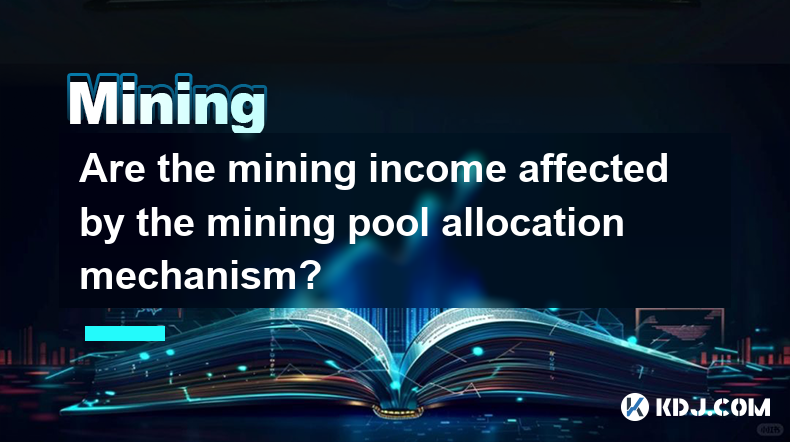
Are the mining income affected by the mining pool allocation mechanism?
Mar 31,2025 at 05:49pm
Understanding Mining Pool Allocation MechanismsMining pools aggregate the hashing power of many miners to increase the chances of successfully mining a block. The reward for successfully mining a block is then distributed among the pool's participants based on their contribution – usually measured in shares submitted. The allocation mechanism determine...

Why is mining algorithm more suitable for graphics card processing?
Mar 31,2025 at 05:28pm
The Parallel Processing Power of GPUs in Cryptocurrency MiningThe core reason why many cryptocurrency mining algorithms are more suitable for graphics card (GPU) processing lies in their inherent architecture. GPUs are designed for parallel processing, handling many calculations simultaneously. This contrasts with CPUs, which excel at sequential proces...
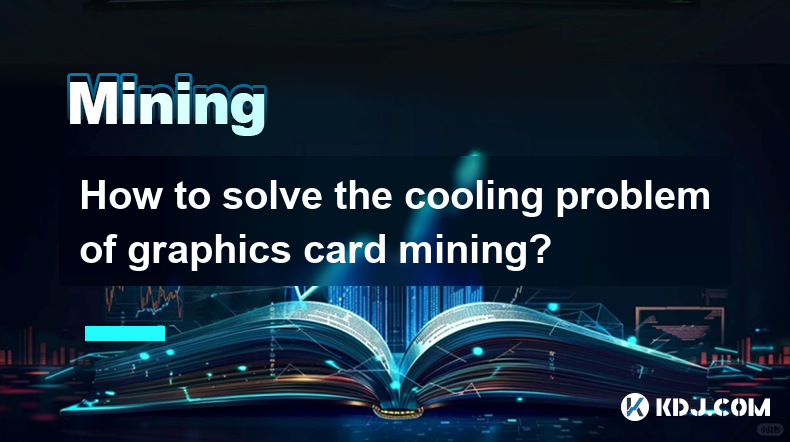
How to solve the cooling problem of graphics card mining?
Mar 31,2025 at 02:35pm
Understanding GPU Cooling in Cryptocurrency MiningGraphics cards (GPUs) generate significant heat during cryptocurrency mining, demanding efficient cooling solutions to prevent damage and maintain optimal performance. Overheating can lead to reduced hash rates, instability, and even permanent hardware failure. This necessitates a proactive approach to ...
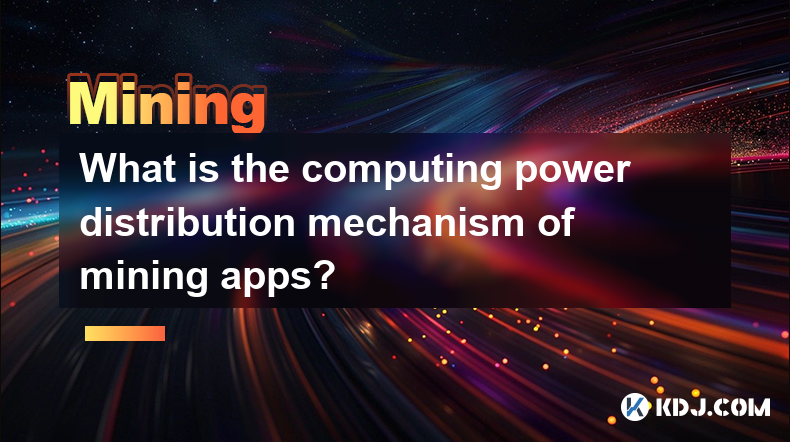
What is the computing power distribution mechanism of mining apps?
Mar 31,2025 at 03:56pm
Understanding Hashrate Distribution in Mining AppsMining apps, used to participate in the Proof-of-Work (PoW) consensus mechanism of cryptocurrencies like Bitcoin, rely on a distributed network of miners contributing computing power. This power, measured in hashes per second (hashrate), isn't evenly distributed. Understanding how it's allocated is cruc...
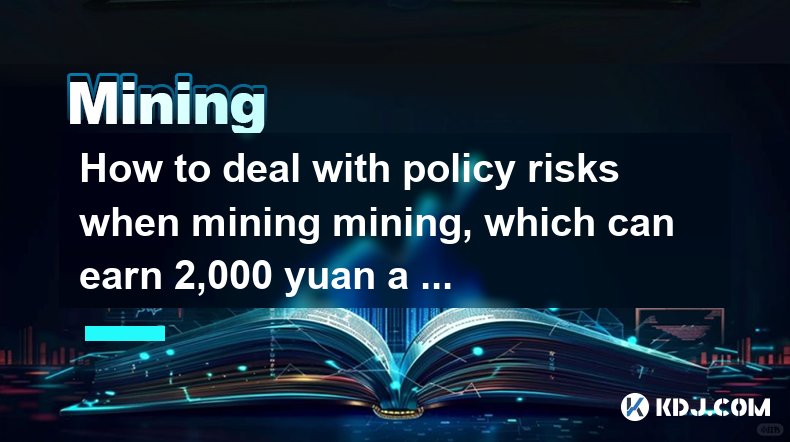
How to deal with policy risks when mining mining, which can earn 2,000 yuan a day?
Mar 31,2025 at 05:00pm
How to Deal with Policy Risks When Mining, Aiming for 2,000 Yuan Daily Profit? Understanding the Volatility of Cryptocurrency MiningMining cryptocurrencies, with the goal of a 2,000 yuan daily profit, is incredibly ambitious and inherently risky. This ambition hinges heavily on several factors, including the chosen cryptocurrency, the hash rate of your ...
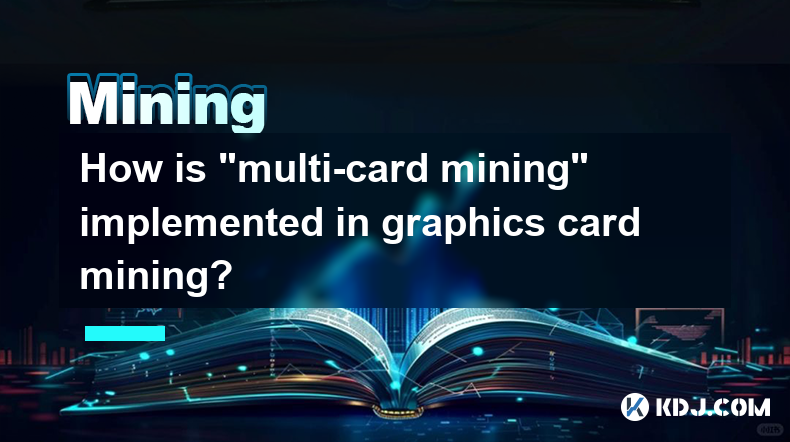
How is "multi-card mining" implemented in graphics card mining?
Mar 31,2025 at 07:49pm
Understanding Multi-Card Mining SetupMulti-card mining, in the context of cryptocurrency mining using graphics cards (GPUs), refers to the practice of using multiple GPUs simultaneously to increase the overall hashing power and thus, the chances of successfully mining a block and earning cryptocurrency rewards. This is significantly more efficient than...

Are the mining income affected by the mining pool allocation mechanism?
Mar 31,2025 at 05:49pm
Understanding Mining Pool Allocation MechanismsMining pools aggregate the hashing power of many miners to increase the chances of successfully mining a block. The reward for successfully mining a block is then distributed among the pool's participants based on their contribution – usually measured in shares submitted. The allocation mechanism determine...

Why is mining algorithm more suitable for graphics card processing?
Mar 31,2025 at 05:28pm
The Parallel Processing Power of GPUs in Cryptocurrency MiningThe core reason why many cryptocurrency mining algorithms are more suitable for graphics card (GPU) processing lies in their inherent architecture. GPUs are designed for parallel processing, handling many calculations simultaneously. This contrasts with CPUs, which excel at sequential proces...

How to solve the cooling problem of graphics card mining?
Mar 31,2025 at 02:35pm
Understanding GPU Cooling in Cryptocurrency MiningGraphics cards (GPUs) generate significant heat during cryptocurrency mining, demanding efficient cooling solutions to prevent damage and maintain optimal performance. Overheating can lead to reduced hash rates, instability, and even permanent hardware failure. This necessitates a proactive approach to ...

What is the computing power distribution mechanism of mining apps?
Mar 31,2025 at 03:56pm
Understanding Hashrate Distribution in Mining AppsMining apps, used to participate in the Proof-of-Work (PoW) consensus mechanism of cryptocurrencies like Bitcoin, rely on a distributed network of miners contributing computing power. This power, measured in hashes per second (hashrate), isn't evenly distributed. Understanding how it's allocated is cruc...

How to deal with policy risks when mining mining, which can earn 2,000 yuan a day?
Mar 31,2025 at 05:00pm
How to Deal with Policy Risks When Mining, Aiming for 2,000 Yuan Daily Profit? Understanding the Volatility of Cryptocurrency MiningMining cryptocurrencies, with the goal of a 2,000 yuan daily profit, is incredibly ambitious and inherently risky. This ambition hinges heavily on several factors, including the chosen cryptocurrency, the hash rate of your ...

How is "multi-card mining" implemented in graphics card mining?
Mar 31,2025 at 07:49pm
Understanding Multi-Card Mining SetupMulti-card mining, in the context of cryptocurrency mining using graphics cards (GPUs), refers to the practice of using multiple GPUs simultaneously to increase the overall hashing power and thus, the chances of successfully mining a block and earning cryptocurrency rewards. This is significantly more efficient than...
See all articles






















































































